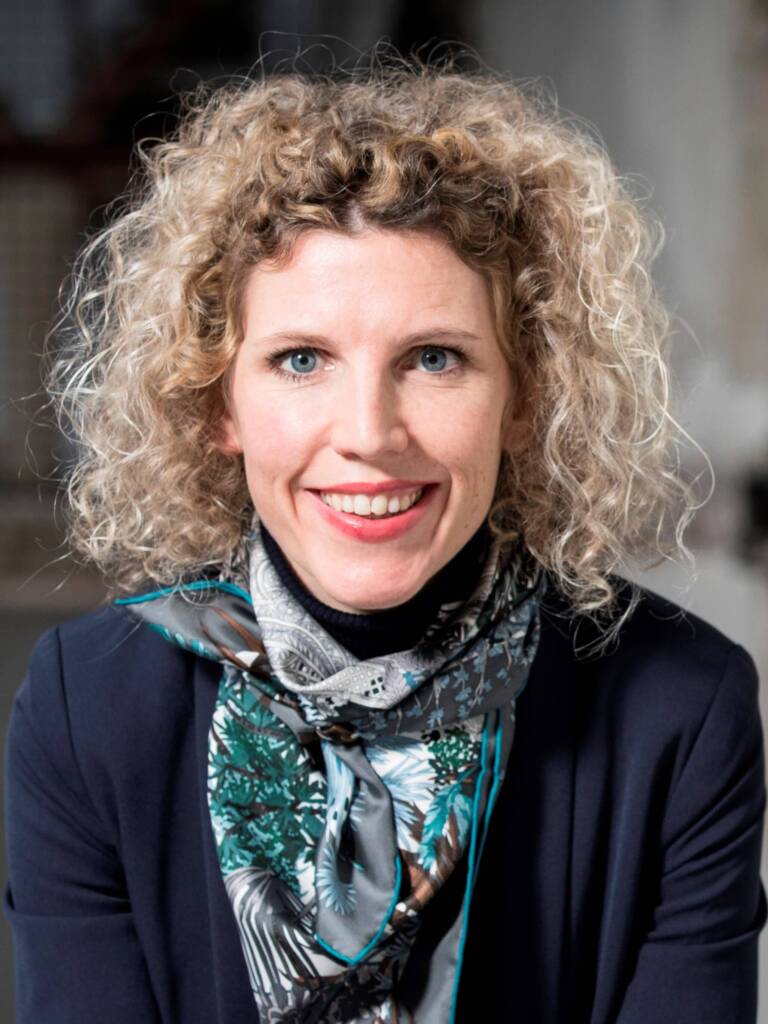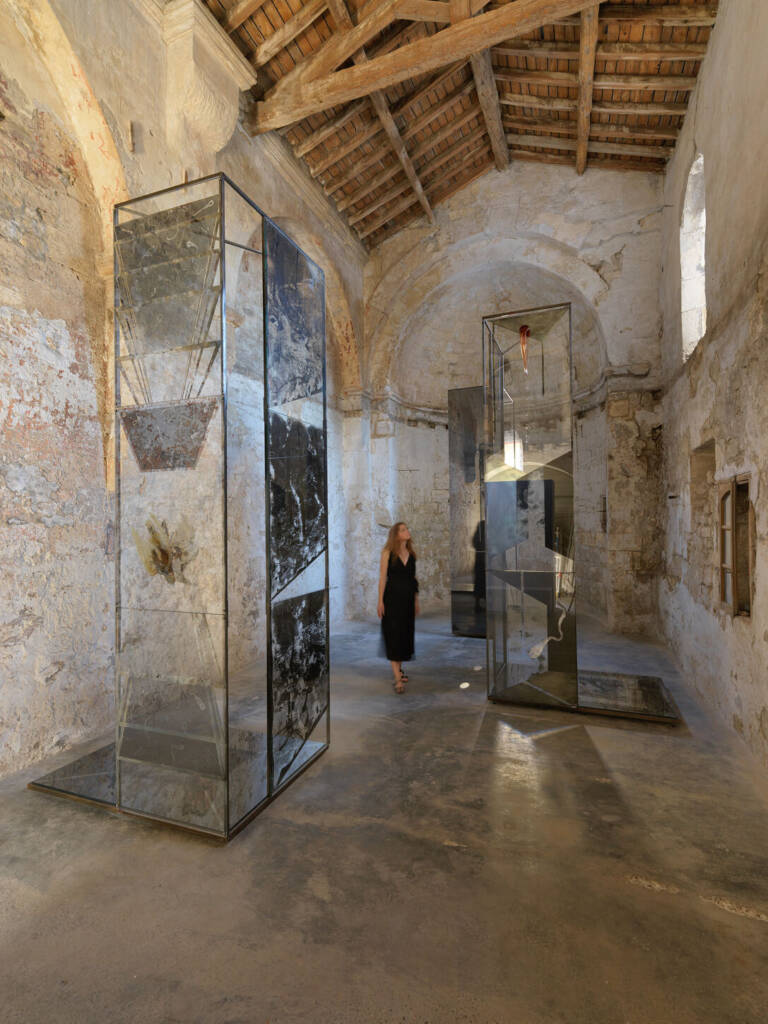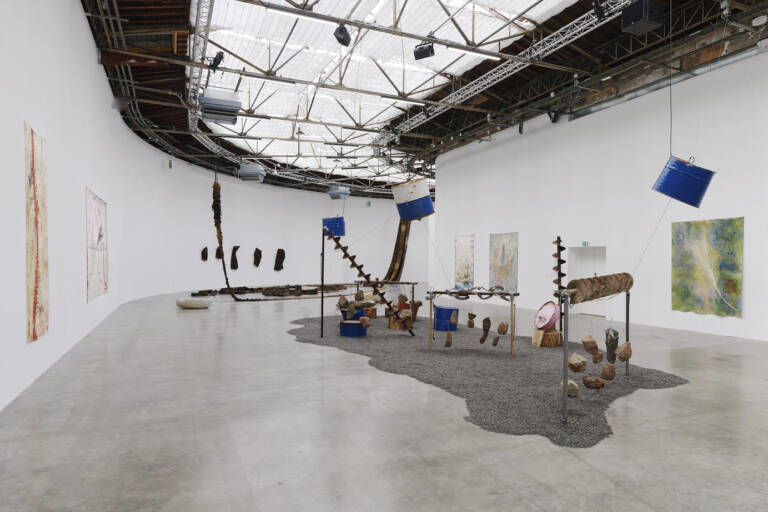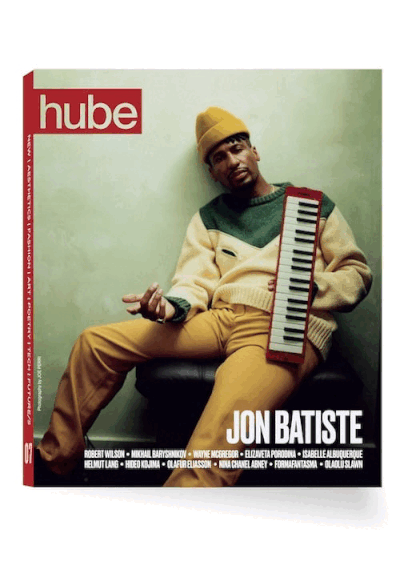
Photography by FRANÇOIS BOUCHON

Courtesy of the artists and GALERIE ESCOUGNOU-CETRARO (Paris)
© ADAGP, Paris; Photography by HERVÉ HÔTE
To speak of Daria de Beauvais as only a curator would be accurate, but incomplete. As Senior Curator and Head of International Relations at Palais de Tokyo, she operates within one of Paris’ top contemporary art institutions, but as a leader in the industry for over 20 years, her influence spans far beyond the raw, industrial halls. For over two decades, she has moved fluidly between biennales, fairs, and international projects, shaping a curatorial practice that assembles exhibitions as both research and journey, both wound and salve. Her approach is rooted in literature, sharpened by an attraction for overlooked histories and Indigenous voices, and always tethered to one simple principle: everything we do is for an audience.
In this conversation with hube, de Beauvais reflects on the shock of her first Yves Klein blue, the way space can command or liberate an exhibition, and why the most enduring shows are the ones that move us inward towards the intimate, the unknown, the unseen.
hube: Every artist or curator has a unique origin story. What early influences or pivotal moments helped define your passion and purpose?
Daria de Beauvais: My parents were antique dealers, so I grew up surrounded by art. But a few key moments in my Parisian childhood connected me more specifically to modern and contemporary art. I remember my father taking me to see the Pont-Neuf wrapped by Christo and Jeanne-Claude—I was very young, but the sense of awe from that project still stays with me. Later, on a school trip to the Centre Pompidou, I had what I’d call my first real aesthetic shock: a room devoted to Yves Klein’s blue monochromes, with huge windows opening onto the sky.
I went on to study Comparative Literature at university, and during a class that bridged literature and visual arts, I realised I wanted to work with artists. That led me to pursue a master’s in Contemporary Art History and another in Curatorial Practices, before taking on various international roles. I never set out to ‘become a curator’—I just wanted to accompany artists, and eventually that path made me one. Very early on, I also became deeply inspired by major female figures like Marina Abramović, Louise Bourgeois, Sophie Calle, Rebecca Horn, Ana Mendieta, Annette Messager, and Cindy Sherman. They were artists whose assertiveness resonated with me—women I’ve never worked with, but who stand as guardian figures in my mind.
h: Palais de Tokyo is known for its raw architecture and experimental programming. How does space, physically, conceptually, or institutionally, shape your curatorial imagination?
DB: In a world that is constantly shifting, and in a rapidly evolving Parisian scene, Palais de Tokyo continues to hold its ground. After twenty-three years, it remains a place of creation, knowledge, collaboration, discovery, and exchange.
The architecture is at once grandiose and raw, yet incredibly modular—the result of a building constructed in the 1930s, adapted by the architectural duo Lacaton & Vassal. Its scale allows us to experiment in many directions: from a young artist’s first solo show to carte blanche projects that take over the entire building, long-term site-specific commissions, or group exhibitions that can span anywhere from a few hundred to several thousand square metres. And of course, the cultural programme: performances, screenings, talks or special events. For me, Palais de Tokyo is an extraordinary playground for both artists and curators. Because the directors are appointed for fixed terms, the institution is always shifting and always challenging itself. I think that is part of why I have stayed here for a long time: it never becomes static. Our curatorial team also evolves over time, bringing in different voices and perspectives.
To widen our scope, we regularly invite guest curators. One example is the collaboration with Naomi Beckwith, Deputy Director and Chief Curator of the Guggenheim Museum and Artistic Director for documenta 16, who curates with our team the collective exhibition ECHO DELAY REVERB in autumn 2025. It explores the relationship between American art and francophone thought, tracing the transatlantic circulation of forms and ideas. It is an ambitious and landmark project.

